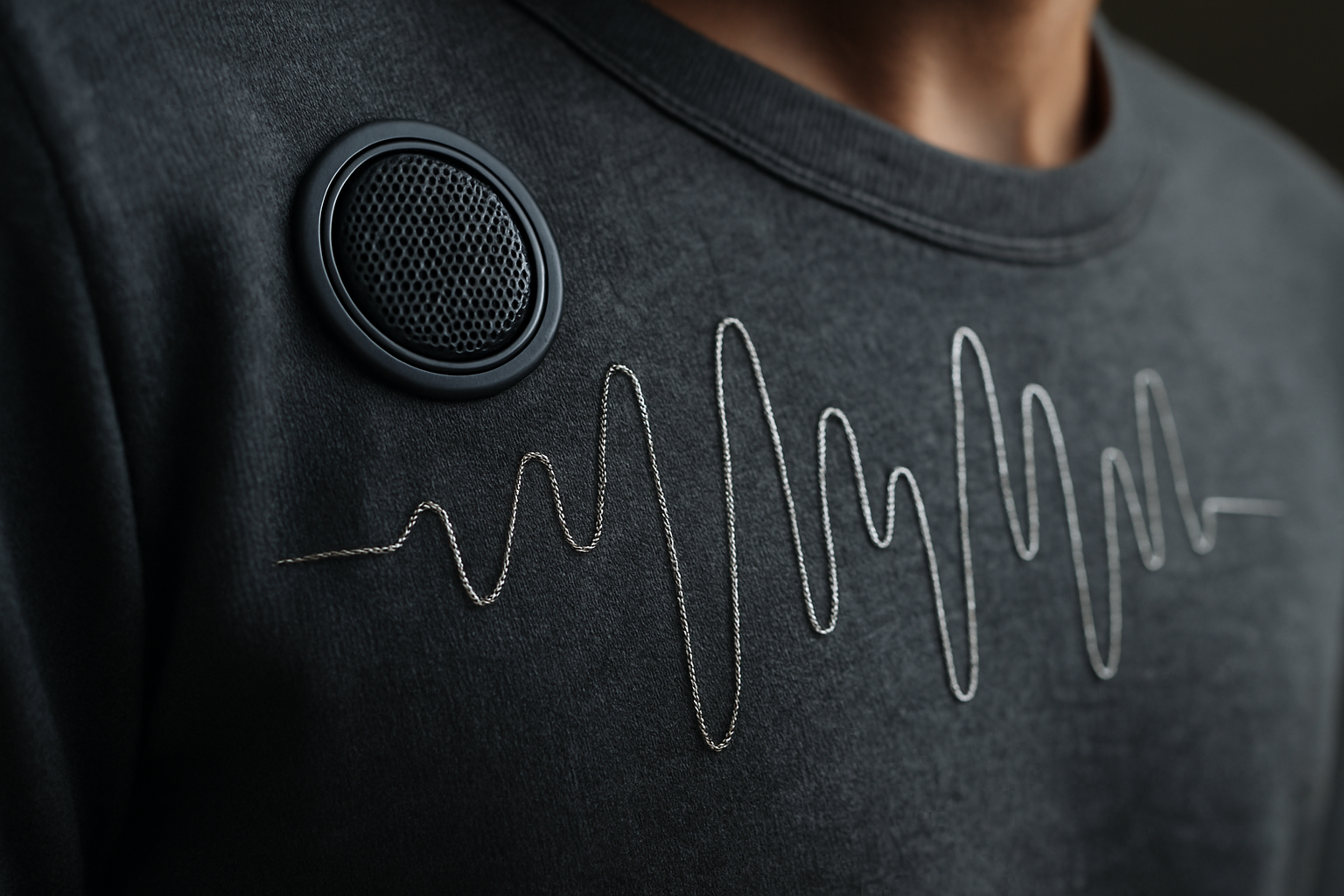Sonic Fabric: The Sound of Fashion
In a world where technology continues to push boundaries, an unexpected fusion of sound and textile is revolutionizing both the fashion and audio industries. Sonic fabric, a groundbreaking material that can play music, is poised to redefine our relationship with clothing and audio experiences. This innovative textile not only looks and feels like regular fabric but also functions as a speaker, offering a unique blend of style and sound that's capturing the imagination of designers, musicians, and tech enthusiasts alike.

In 2006, researchers at MIT’s Media Lab took the concept further by developing electronic textiles that could conduct electricity and transmit data. This breakthrough laid the groundwork for the development of fabrics that could not only carry electrical signals but also produce sound.
How Sonic Fabric Works
At its core, sonic fabric is a composite material that combines traditional textile fibers with conductive threads and miniature speakers. The conductive threads act as wiring, carrying audio signals throughout the fabric. These signals are then converted into sound by tiny, flexible speakers woven into the material.
The key to sonic fabric’s functionality lies in its construction. The conductive threads are strategically placed to create a network that can distribute audio signals evenly across the fabric. This ensures that sound can be produced from any part of the material, not just from specific points.
Applications in Fashion
The fashion industry has been quick to recognize the potential of sonic fabric. Designers are incorporating this technology into a wide range of garments and accessories, from jackets that can play music to scarves that whisper ambient sounds.
One of the most exciting applications is in the realm of wearable instruments. Imagine a dress that can be played like a piano or a pair of gloves that can mix beats with a simple touch. These concepts are no longer confined to science fiction; they’re becoming a reality thanks to sonic fabric.
Beyond Fashion: Practical Applications
While the fashion applications of sonic fabric are certainly eye-catching, its potential extends far beyond the runway. The technology is being explored for use in a variety of practical applications, from automotive interiors to healthcare.
In the automotive industry, sonic fabric could revolutionize car audio systems. Instead of traditional speakers, entire car interiors could be lined with sonic fabric, creating an immersive sound experience while reducing weight and freeing up space.
In healthcare, sonic fabric could be used to create “smart” hospital gowns that monitor patients’ vital signs and provide soothing sounds to aid in recovery. The fabric could also be incorporated into therapy tools for individuals with sensory processing disorders.
The Technical Challenges
Despite its potential, sonic fabric faces several technical challenges that must be overcome before widespread adoption is possible. One of the primary issues is power consumption. Current prototypes require a significant amount of energy to produce audible sound, which limits their practicality in many applications.
Another challenge is durability. The delicate electronics woven into the fabric must be able to withstand regular wear and tear, including washing and drying. Researchers are exploring various methods of encapsulating the electronic components to protect them from moisture and physical stress.
The Future of Sonic Fabric
As research continues and technology improves, the future of sonic fabric looks promising. Advancements in flexible electronics and energy harvesting could address many of the current limitations, paving the way for more widespread adoption.
One exciting area of development is the integration of sonic fabric with other smart textile technologies. For example, combining sonic fabric with thermoelectric materials could create clothing that generates its own power from body heat, solving the energy consumption issue.
The Impact on Audio Industry
The rise of sonic fabric could have a profound impact on the traditional audio industry. As clothing and accessories become capable of producing high-quality sound, the demand for traditional speakers and headphones may decrease.
However, this shift also presents new opportunities for audio companies. Those that can adapt to this new paradigm and develop innovative ways to integrate their technology with sonic fabric stand to benefit greatly from this emerging market.
Ethical and Privacy Concerns
As with any new technology, sonic fabric raises important ethical and privacy questions. The ability to discreetly play audio through clothing could be misused for surveillance or to invade personal space. Additionally, the potential for sonic fabric to collect and transmit data about the wearer’s environment raises concerns about privacy and data security.
Addressing these concerns will be crucial for the widespread acceptance and adoption of sonic fabric technology. Industry leaders and policymakers will need to work together to establish guidelines and regulations that protect individual rights while allowing for innovation.
In conclusion, sonic fabric represents a fascinating convergence of fashion, technology, and audio engineering. As the technology continues to evolve, it has the potential to transform not only how we interact with our clothing but also how we experience sound in our daily lives. While challenges remain, the future of sonic fabric is undoubtedly bright, promising a world where the line between what we wear and what we hear becomes increasingly blurred.





